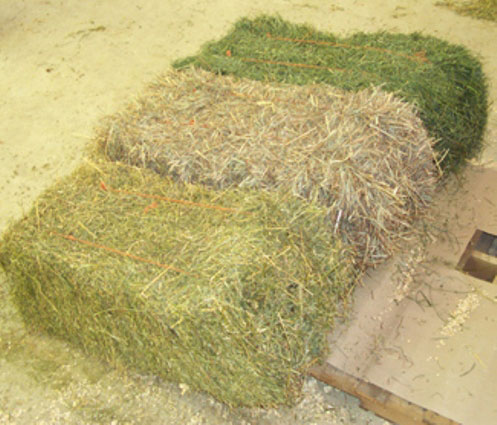
It’s that time of the year when you can expect your pastures to be pretty well dried up and picked over. Unless your pastures have gotten a reprieve thanks to A-L-L that spring/early summer rain. If that’s the case at your farm, your horses are probably meeting their calorie demands and maintaining good condition.
However, another important consideration for your horse’s nutritional program is to maintain a healthy gastrointestinal tract. Horses are “grazers”, that means they eat small amounts almost constantly over a 24 hour period. This method of eating is the basis of the evolution of their digestive tract. The horse’s stomach empties pretty rapidly with liquid leaving the stomach within about 30 minutes and the complete gastric emptying of a forage meal within 24 hours. Empty stomachs increase the risk of developing gastric ulcers because gastric acid is released constantly. A stomach with little to no food is less able to buffer stomach acid than a full one. A well-developed forage barrier floats on the stomach acid, helping to reduce the amount of acid that splashes into the unprotected tissue, which covers about one-third of the equine stomach.
I like to keep forage (hay when they are not on pasture) in front of my horses for as many hours of the day and night, as possible. Not everyone has the ability to throw hay to their horses every four to five hours, but this is where slow feeders are a valuable tool. They allow small amounts of forage to last far longer than when the same amount of hay is fed loose. Feeding a small slow feeder net of hay at night when your horse is stalled, will reduce the number of hours standing without food.
Now, all that being said, think about the amount of hay you will need to keep your horse in good condition throughout the year. Scrimping on hay due to the cost will only cost you more in an emergency vet call. I know, I know “horse” hay was reaching astronomical prices over the past few months when we were unable to get into the fields to bale. But now that the weather seems to be on a drier pattern, prices should drop. Another way you might be able to save, is to purchase your yearly amount of hay right out of the field and store it yourself. Buying small amounts throughout the year is going to end up costing you more. Let’s face it, the farmer will need to handle it twice, as well as store it and therefore is going to charge you accordingly. AND just to be sure you don’t end up in the predicament that many horse owners found themselves in earlier this summer, figure and purchase enough hay to get you through to June/July 2020.
